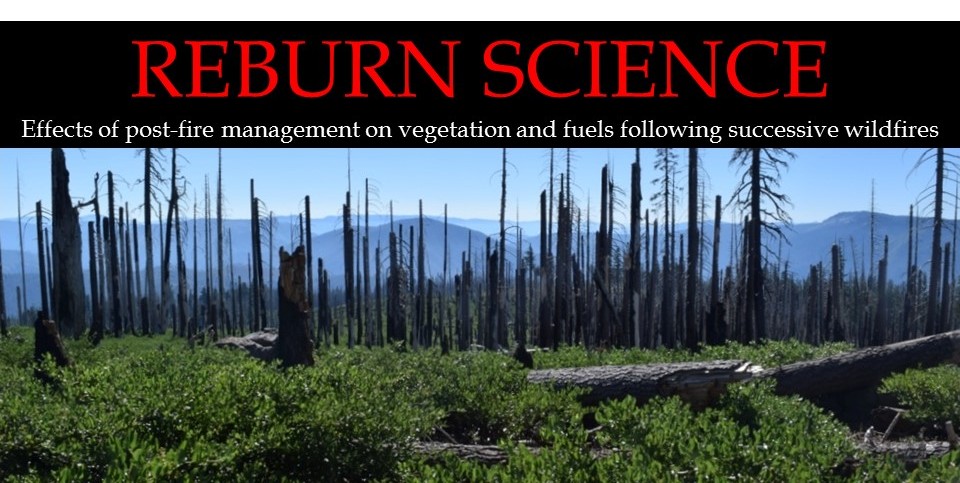
Project Planning, Spring 2017
Planning for field sampling focused on identifying which previously sampled plots should be resampled, prioritizing sampling of the selected plots, drafting protocols for sampling based on the protocols used when the plots were originally sampled, and recruiting and hiring a graduate student and field crew. A total of 334 plots were sampled after the Storrie and Rich fires, constituting our pool of potential locations to resample. A handful of plots were excluded form consideration because they were sampled after the 2012 Chips reburn or treatments occurred after initial sampling. All other plots were prioritized based on dominant vegetation, sequence of burn severities from initial to second fires, access difficulty, slope danger, and underlying geology. The initial prioritization map is found below (Figure 1).
Slightly variable sampling protocols were used in the initial samples for the Storrie and Rich fires. We decided it was critical to replicate the sampling protocols for each plot as used in the initial samples, and use appropriate parameters and relativization procedures where necessary prior to analysis to rectify the sampling protocol differences. Analysis concerning changes and causality from pre- to post-reburn are our primary concern and not comparison among fire/sampling units. We expect no issues once analysis commences due to protocol variation.
A substantial amount of planning effort was also expended hiring a field crew and graduate student to work on the project. Co-PI Markwith recruited a Ph.D. student, Asha Paudel, from Nepal with B.S. and M.S. degrees in Botany from Tribhuvan University. Asha's master's thesis focused on human induced changes to fire regimes and vegetation communities in the sub-alpine shrub zone in the Himalayas. Three field technicians were hired by the Sierra-Cascade Province Ecology Program, including Crew Leader Derek, and techs Nathan Silvis and Emily Purvis. Also, two students at Feather River College in Quincy, CA were recruited through their internship program to work on the crew, including Miko Fogarty and Tirian Shirley.

Figure 1: Map of study plots and initial priorization scheme prior to sampling in the summer of 2017.
Field Season #1, Summer 2017
Six intrepid scientists took to the Sierra Nevada range this June to begin the Herculean task of field sampling, which will eventually take two entire summers. The photos below are a sampling of site conditions and a look at the crew's work in progress. Enjoy!

Field Crew 2017: Left to right, Nathan, Asha, Tirian, Derek, Miko, and Emily.
Protocol Test: The first samples were taken with Co-PI Scott Markwith (left), PI Michelle Coppoletta (right), and Co-PI Kyle Merriam (lower left) present to work through any questions or sticking points with Crew Leader Derek (center). Plot location in Rich fire adjacent to high severity patch.
Slope Sampling: Two of the field crew sample a slope at one of the Rich fire plots.
Lasers: Derek shows Asha how to operate the laser level/range finder in a moderate severity plot in the Rich fire.
Snags: Dangerous sampling conditions on a slope of logs and standing dead snags in a high severity patch in the Rich fire.
Mixed Severity: Widely spaced survivors in a mixed severity patch in the Rich fire footprint.
Field Season #2, Summer 2018
Following field season #1 in 2017 we assessed our success in targeting and obtaining an adequate sample size for the various initial and reburn severity combinations in our sample area. Our opportunistic sampling pattern in 2017 left some holes to fill, and the plots with the remaining needed burn combinations were largely in remote locations in the Storrie Fire footprint. The use of off-road vehicles and extended over-night camping in the backcountry was the prescription for the 2018 field season.
The summer of 2018 was also a busy one for wildfires in California, and our study area was no exception. The relatively small Murphy Fire, ~100 acres, began in early August within the Storrie Fire footprint in the Feather River Canyon. The field crew was camped a couple miles away, but due to the explosive growth of other fires in California during 2018 we took no chance with the crew. The day after the Murphy Fire ignited we evacuated the field crew and reassigned them temporarily to other locations until it was controlled less than a week later.
The photos below are a sampling of site co nditions and a look at the crew's work in 2018. Enjoy!
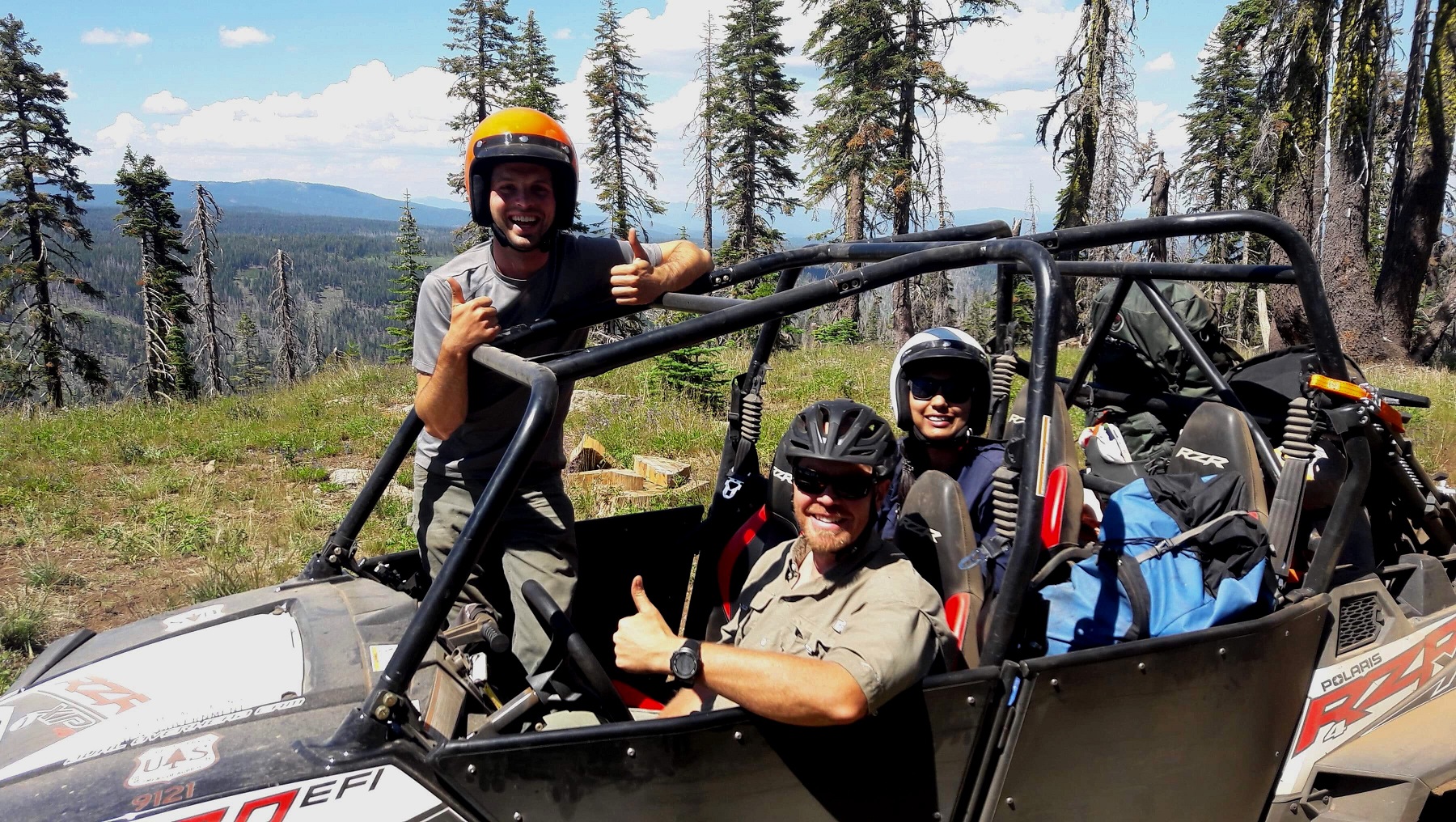
Some of the crew very thankful for ATVs.
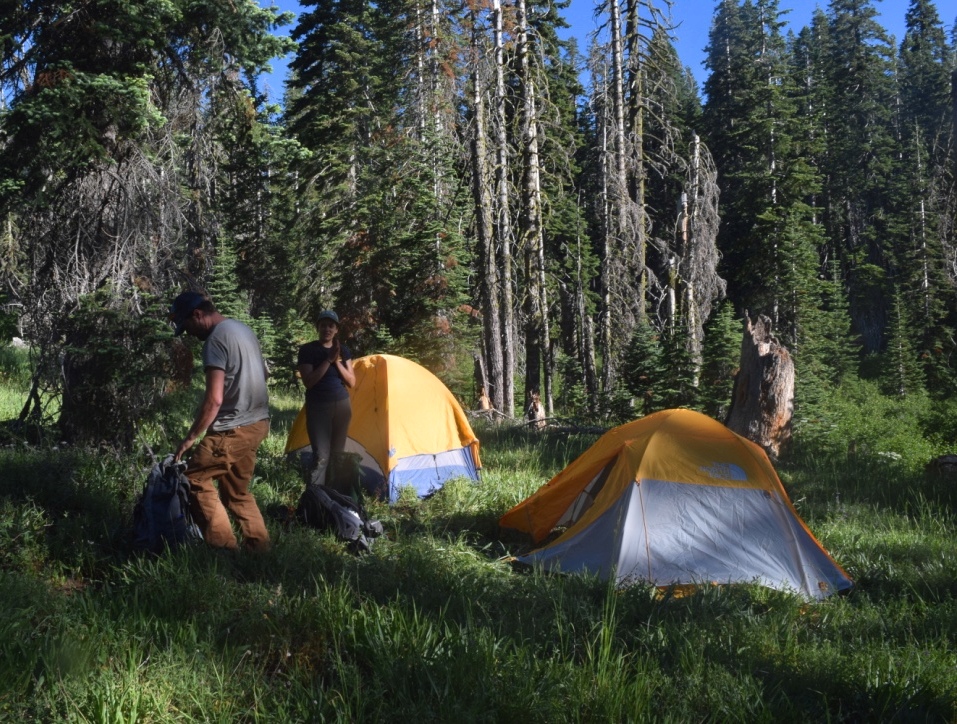
Finding flat ground out here for a tent isn't always easy, but this meadow will do just fine.
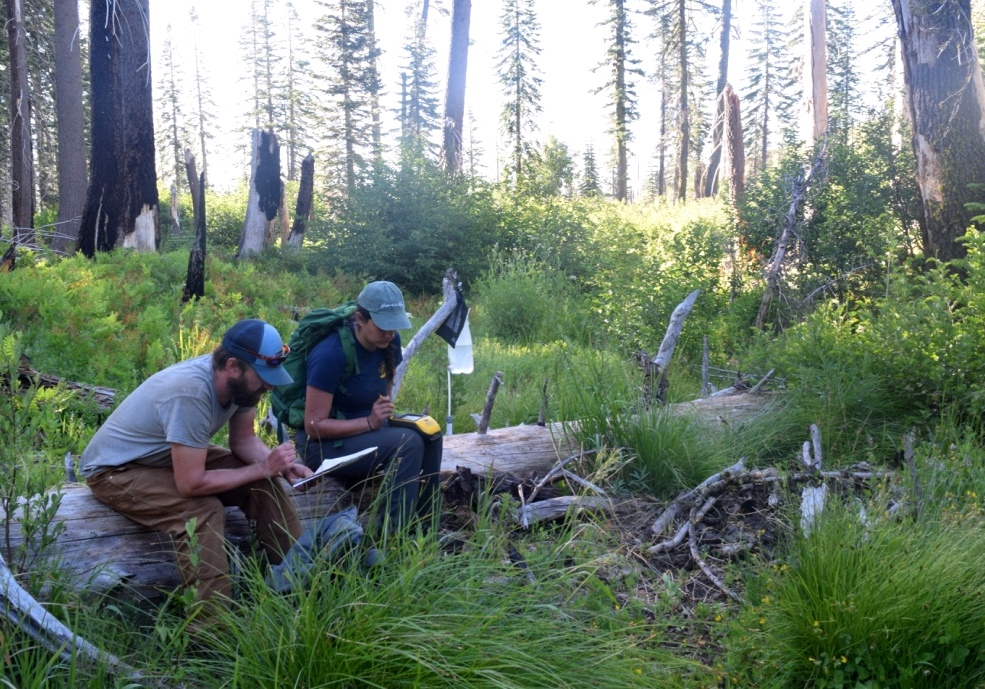
Gotta stay oriented out here. The trees look pretty much the same everywhere...
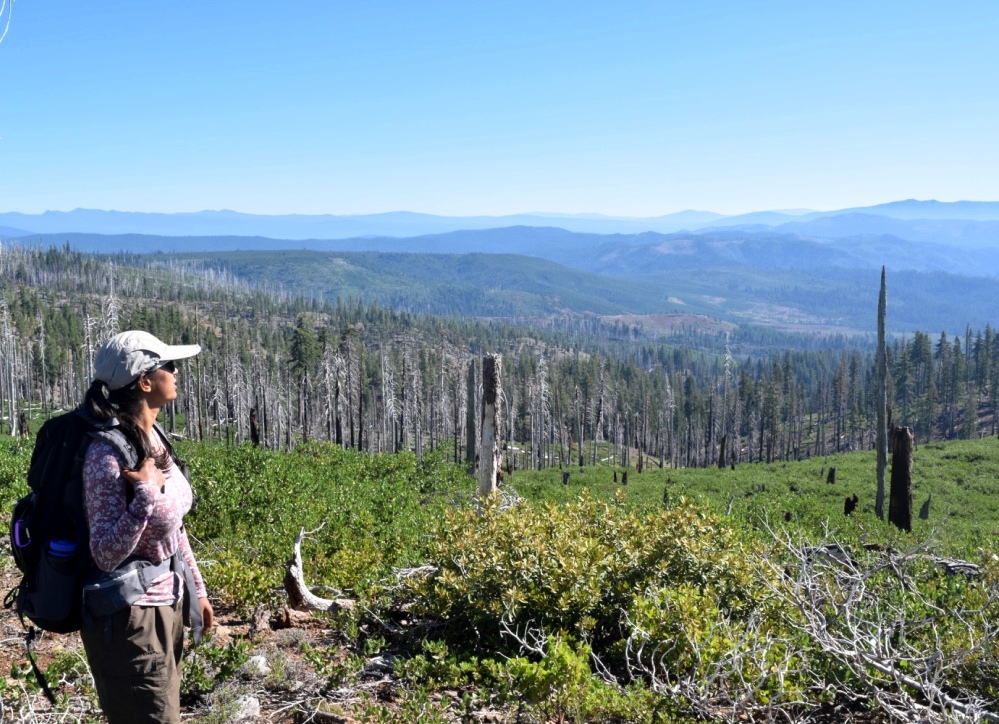
Asha enjoys the view provided by the high severity forest clearing.
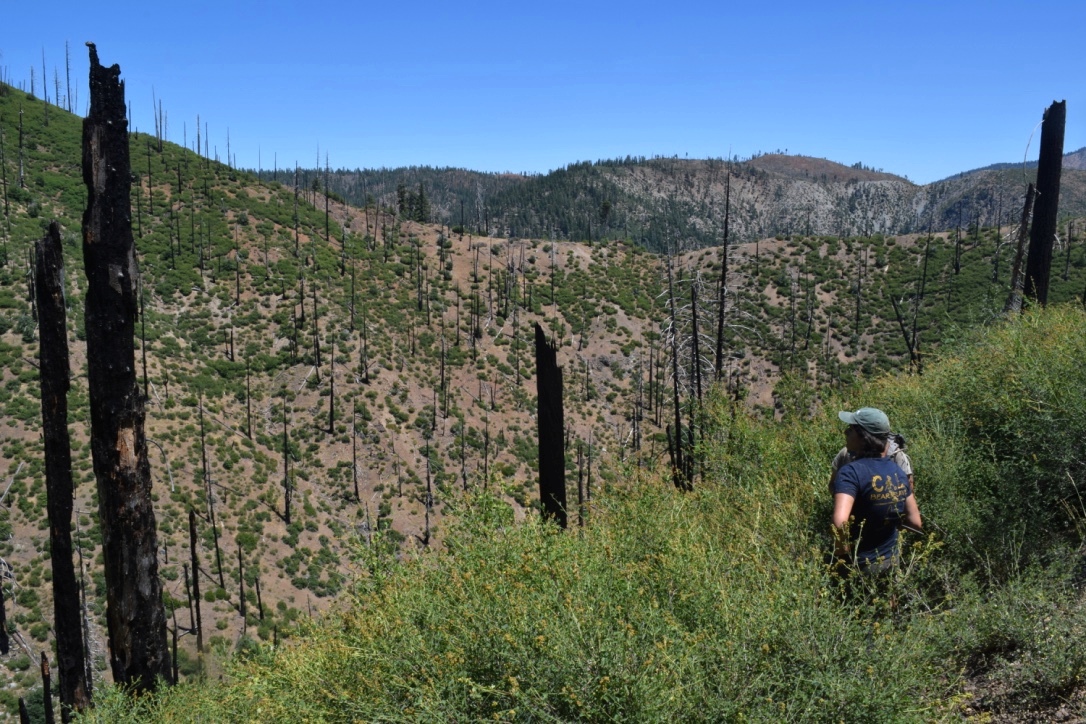
Shrub cover in high severity plots can be frustrating for sampling and hiking.
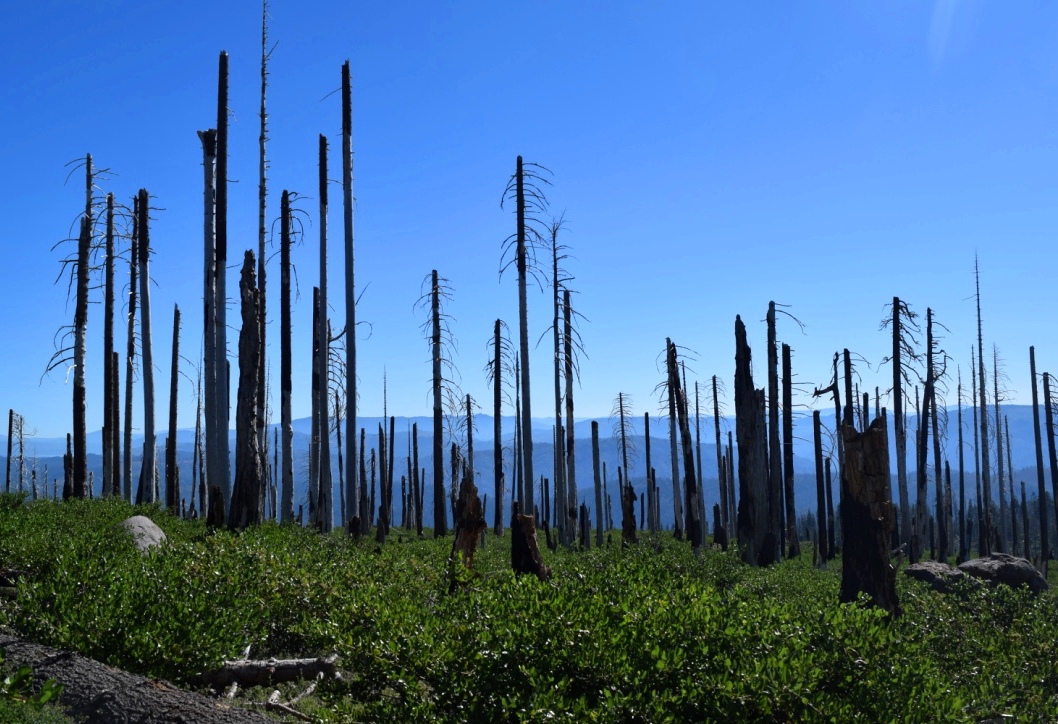
Wind and standing dead snags don't mix when sampling. Look at those shrubs also. This plot is a minefield.
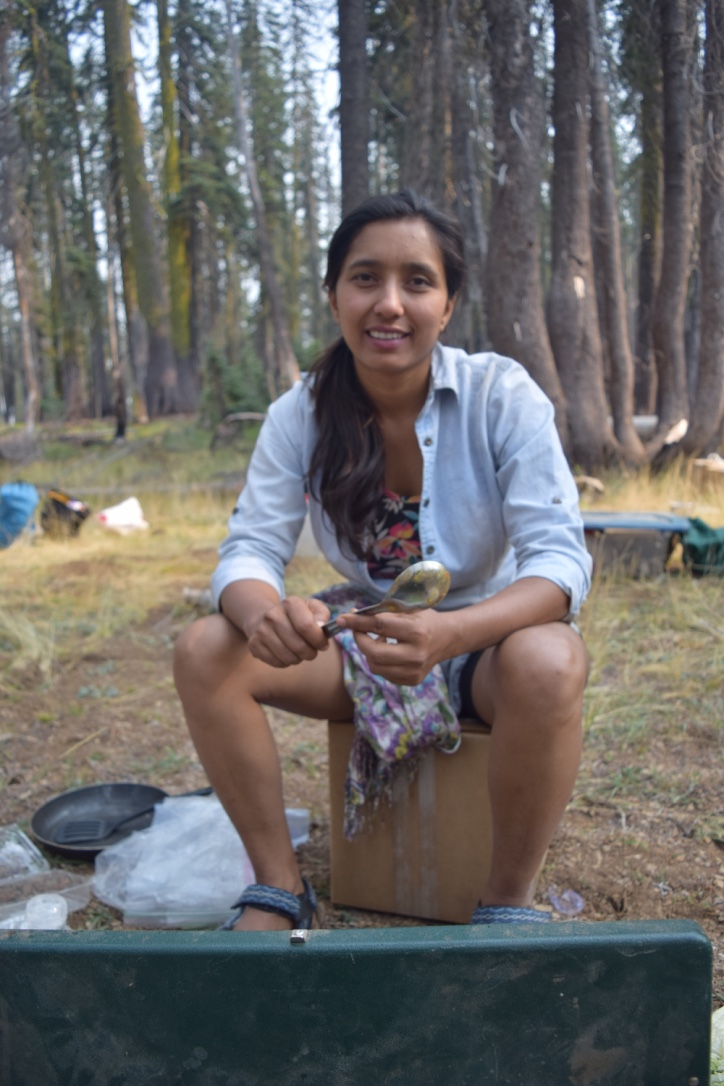
Asha cooking for the crew.

The sun sets on our second summer of field sampling...
